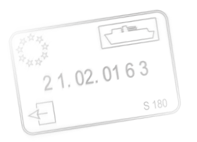



Coins and coin making
Aureus. An abbreviation of DENARIUS AUREUS or golden Denarius. This was the basic gold coin of the later Roman republic and the early and middle stages of the Roman Empire.
The word Denarius on its own refers to the basic Roman silver coin taken from the Latin for a piece of 10 Asses. One Denarius was originally tariffed (worth) 10 of these larger bronze coins known as an Ass. After 145 BC the ratio was raised to 16 Asses to one Denarius.
AUREUS Were relatively small 18 mm in diameter and heavy at around 10.7 grams. Later the weight reduced to 8 and 9 grams and broader at about 20 mm. The Emperor Augustus stabilise the weight of the Aureus at about 7.8 grams equal to about 25 Denarii. Aureus were Relatively small 18 mm in diameter and heavy (around 10.7 grams). later the weight reduced to 8 and 9 grams and broader at about 20 mm. Augustus stabilise the weight of the Aureus stabilised the weight at about 7.8 grams equal to about 25 Denarii.
In A.D. 310 the Emperor Constantine the great began to replace the gold Aureus with the Solidus, a new and lighter gold coin weighing about 4.5 grams
Moneyers who worked for King Offa:-
PENDRED (or PEND RED)
PENdREd (or WENDRED)
PAENDRAED
PENdRΛED
RENdRED
PENDÆD
PENWALD (or WENWALD, PEHTWALD)
RENDRED (or WENDRED, WEND RED)
This information has been taken from ‘The Macmillan Encyclopaedic dictionary of Numismatics - by Richard G Doty
The Penny. A coin introduced in the late 8th century the abbreviated form of penny a lower case ‘d’ is taken from the Frankish ‘denier’. The pennies prototype ‘novus denarius’ or new denarius. Minted in silver 1st by 2 minor kings in Kent perhaps about 765 A.D. King fire conquered Kent between 783 and 784 A.D. and adopted the transplanted denier (penny) for his own ends.
the name may have derived from King ‘Pepin the short’ of France. it may also have derived from ‘pennigr’ an old Norse word meaning pan shaped but this is not too convincing. (it is possible that it was named after one of its first makers, the Moneyer PENDRED who worked for King Offa!). or from ‘Pfennig’ the German version of the French denier.
Solidus. a Roman and Byzantine gold coin which was the mainstay of the late classical and early mediaeval commerce. Introduced by Constantine the great who ruled between 306 and 337 AD. and meant to replace the ‘aureus’. The solidus first appeared around 310 A.D. with an average weight of about 4.45 grams and a diameter of 20 mm ( the PENDRED weighs 3.748 grams and 19mm diameter).
Coin dies. A hard piece of metal with a design on the reverse, used for coining money. in practice, the two dies are needed to strike a coin, and upper die, which is driven into a piece of metal to be turned into money, and a lower die into which that piece of metal is driven.
In ancient times, the lower die was the more important of the two. Originally adapted from an official seal, this lower die or ‘pile die’ was fixed in an anvil, hence its name ‘anvil die’. Metal was driven into it by hand with a sledgehammer, but the hammered did not strike the metal directly. A poundage was placed between them, ensuring greater accuracy and clarity of striking. This punch was the ancestor of the second die, also called a ‘tussell die’. Its initial function was merely to help produce a clearer image, but eventually it was obvious this punch could simultaneously impress another image on the ‘planchets’ upper side.
In contrast to modern coinage, when we refer to an ‘obverse’ on an ancient coin we mean that image created by the lower die.
The ‘planchet’ or metal blank may be cast, then weighed and checked to ensure the coin contains the correct amount of metal. For thinner coins of mediaeval times, plan jets were cut from sheets of precious metal one by one. However they were produced, the blanks were ready to be struck into coins.
The ‘planchet’ might be struck hot or cold. Called striking was the rule in the middle ages, hot striking earlier. The ‘planchet’ might be struck with a sledgehammer more than once. The first blow fixed the ‘planchet’ in-place; and subsequent ones brought up the design.
Mancus. in earlier times there is evidence of Offa’s vow to send 365 Mancus each year to the holy See in Rome. It is clear from a letter from Pope Leo to Coenwulf, King of Murcia, that this was at least for a time fulfilled.
(see English historical documents e.d. D.Whitelock 1793-4).
Offa’s Dinar are may have been one of the Mancuses sent to Rome. See a gold Solidas bearing the name of the Moneyer Ciolheard who may have also worked for Offa and Coenwulf. http://en.wikipedia.org/wiki/Numismatics
( see the British Numismatics Journal XXXIV, 8ff - illustrated in Brooks English coins Plate IXV.3)
Also see The website of the British Numismatic Society. http://www.britnumsoc.org/
Extract from ‘A catalogue of English coins in the British museum”.
Anglo Saxon series volume One, by Charles Francis Kearey.
There has been some controversy over the position of the Moneyer in Anglo Saxon times. We have seen that he 1st receives official recognition with the introduction of the ‘penny’ circa 760 AD. The earliest mention of the Moneyer is in the laws of King ÆTHELSTAN and just referred to where it is ordained that the guilty Moneyer shall have his hand struck off and that it shall be placed over the mint smithy. This seems to imply that the Moneyer at this time was the actual fabricator of the coins, not an officer made responsible for them. This supposition is confirmed by the legend ‘me facit’ which were occasionally found following the name of the Moneyer. The chief difficulties in the way of this conclusion are extraordinary variations of spelling which characterise the names of moneyers upon the coins.
Anglo-Saxon gold coins.
A Note extracted from ‘English Hammered Coinage’ - volume one pages
600–1272 by Jeffrey J North.
Most of our knowledge of early Anglo-Saxon gold coinage is derived from the ‘Crondall horde’ of 101 coins, 69 of which are Anglo-Saxon, deposited circa 650 AD or a little earlier. All except for are held in the Ashmolean Museum in Oxford and are fully described and illustrated in Dr C.H.V. Sutherland's ‘ the Anglo Saxon gold coinage
